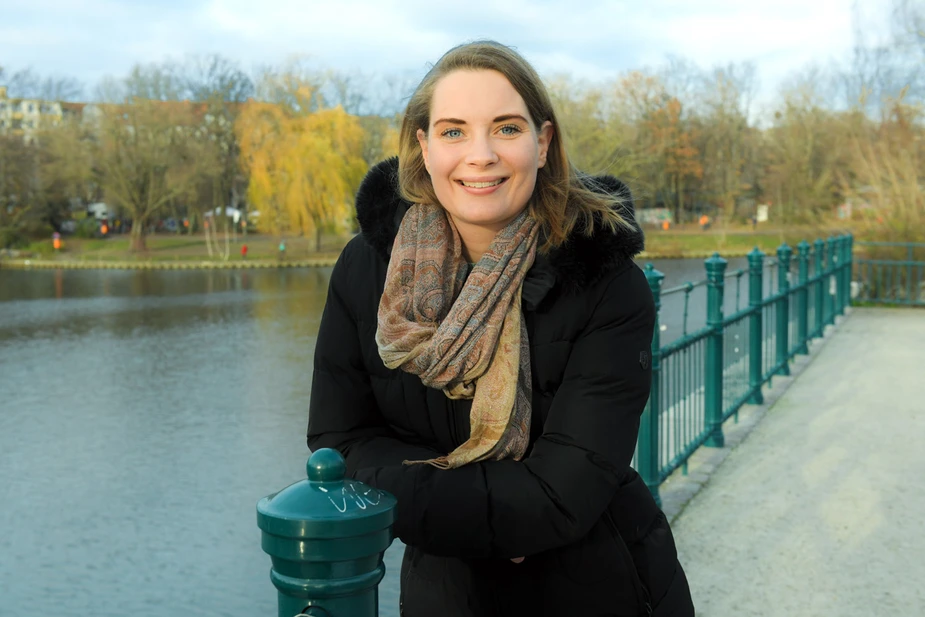In conversation with Franziska Hagos
She is a true Polyanna and head of the Humboldt Explorer project
When asked about role models guiding her career path, Franziska Hagos has to think long and hard. One thing she couldn’t resort to was the experience of growing up in a household of academics. Finally, she remembers her physics teacher who had “major influence on her and who always believed in her.” Although she is a research associate of physics didactics at Humboldt-Universität zu Berlin (HU), her CV never was classic or linear. Though, to her personally, every step of the way was right the way it was. “These are all experiences I wouldn’t want to miss,” says the mother of a four-year-old daughter. Franziska Hagos is currently working on her PhD and seeks to inspire school children to take up science as one of two heads of the Humboldt Explorer project.
Adlershof Journal: Where does your interest in science come from?
Franziska Hagos: It’s always been there. My focus in high school was physics and I have always had an interest in mathematics.
However, you initially decided against studying a natural science, didn’t you?
Yes, in my family, doing an apprenticeship was the respectable and safe thing to do after graduating high school. I completed an apprenticeship as a merchandiser manager and later worked in the office of a rental car company. It didn’t take long for me to realise that this wasn’t fulfilling. After a while, I ended up working as an intern in a daycare facility in Rome. I had a lot of fun working with kids. As time went on, the thought of going to university came up again and again. I liked math and had learned Italian: Studying this combination at HU to become a teacher felt right. It didn’t take long, however, and I realised that studying a language wasn’t for me. And so I switched to physics and finished my master’s degree in 2017, while heavily pregnant.
But you did not become a teacher but work at a university now.
I started my teacher traineeship at a school with a newborn baby but I couldn’t make both work together. It was just too demanding. I tried to adjust and worked as an editor for an online learning platform for a while, when a former professor pointed me in the direction of my current position. It was serendipitous because I could continue working with young people.
You are drawing up a new concept for a HU school project, Humboldt Explorer, together with a colleague in biology didactics.
Humboldt Explorer is the successor of the Humboldt Bayer Mobile project. HU, Bayer Science and the Education Foundation as well as the Stiftung Humboldt-Universität, a foundation, give children and teenagers between year five and twelve the opportunity to investigate phenomenons from their own immediate surroundings that are related to physics and biology, and to analyse and model the data afterwards.
How is this project different from learning at school?
I believe that learning things outside of school can spark an interest in the natural sciences on a different level. We look at subjects like urban environments and urban ecology and document things like biodiversity, noise levels, or air quality. These things are closely connected to the lives of the children and teenagers. Lastly, it give relevance to their own work: Their data are later available for further research and contribute to citizen science. We really hope that we can finally go to the schools in 2022 and get this project off the ground. I find it very important to inspire young people to get into natural sciences.
How do you balance work?
I play table tennis occasionally and enjoy going to Tempelhofer Feld. My favourite place to go on an everyday basis is Landwehr Canal in Neukölln. On weekends, I like to take my daughter to visit to friends of mine, who have a farm for alpacas and donkeys. I generally value and care for the friends in my life.
Peggy Mory for Adlershof Journal
